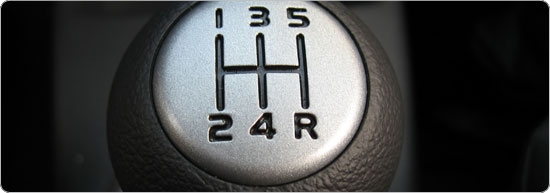Cars with automatic gearboxes are experiencing a rise in acceptance among drivers in Spain due mainly to the great development in electronic technology.
However, in the United States and Japan, its use has been widespread for many years and it is even difficult to find cars with manual gearboxes.
The main difference between the two types of gearbox is that an automatic gearbox removes the clutch pedal and only requires the use of the accelerator and brake, while the manual gearbox adds the clutch pedal and gear lever to change gear, as the name suggests, manually.
In a more technical way we can highlight the following characteristics:
Manual gearbox:
- At the moment, there are far more options and models of cars with manual gearboxes than automatic ones.
- The driver of the car decides at each moment in which gear to drive, and can modify the type of driving; sporty, relaxed, fuel-saving…
- The car equipped with a manual gearbox is more “economical” than the one with an automatic gearbox. In addition to being more economical to purchase (for an average car there can be a difference of 1,000 euros) the manual gearbox provides approximately 1 litre less consumption per 100 kilometres, due to the difference in weight of the vehicles, which is somewhat greater in those with automatic gearboxes; as well as the possibility of choosing the gear in which to drive.
Automatic gearbox:
- The sequential gearboxes offered by most automatic transmissions also allow the driver to adapt his style to the vehicle: sporty, economical, relaxed driving
- As the vehicle itself is responsible for changing the gear in which it is driven, on long road journeys the level of tiredness is lower and in the city it makes the driver safer by reducing possible distractions and preventing him from stalling.
When it comes to choosing a manual or automatic gearbox for off-road vehicles or SUVs, our impression is that the automatic has the upper hand in comparison because it does not stall, it manages engine power and traction more effectively at all times, although we could point out that on steep slopes, unless the automatic is equipped with downhill control, with the manual gearbox you can have more control.
As far as breakdowns are concerned, an automatic gearbox is much more robust than a manual one and has less wear and tear of course on the clutch ? but also on the gearbox itself by making the power dosage more progressive and by its resistance to torque. With correct maintenance, they can be “eternal”. As proof, we can point out that most of the top range car brands, in the most premium versions of their models, come equipped with automatic gearboxes. In return, any breakdown in an automatic gearbox is associated with higher repair costs.
What happens when we plan to buy a second-hand car with an automatic gearbox?
We were talking about how “with proper maintenance” gearboxes can last forever… but what happens when we plan to buy a second-hand car with an automatic gearbox? Of course, it is essential to ensure that the vehicle is properly serviced by reliable garages, that it comes from a private user and not from a fleet of rental vehicles, and that the entire purchase and sale process is transparent, with all the documentation and service seals available for consultation and comparison by the buyer.
Obviously you have the last word when it comes to deciding as a consumer, but from the team at Coches ocasión 4 all, once we have put the pros and cons on the scales we opt for the use of cars with automatic gearboxes. What do you prefer?



